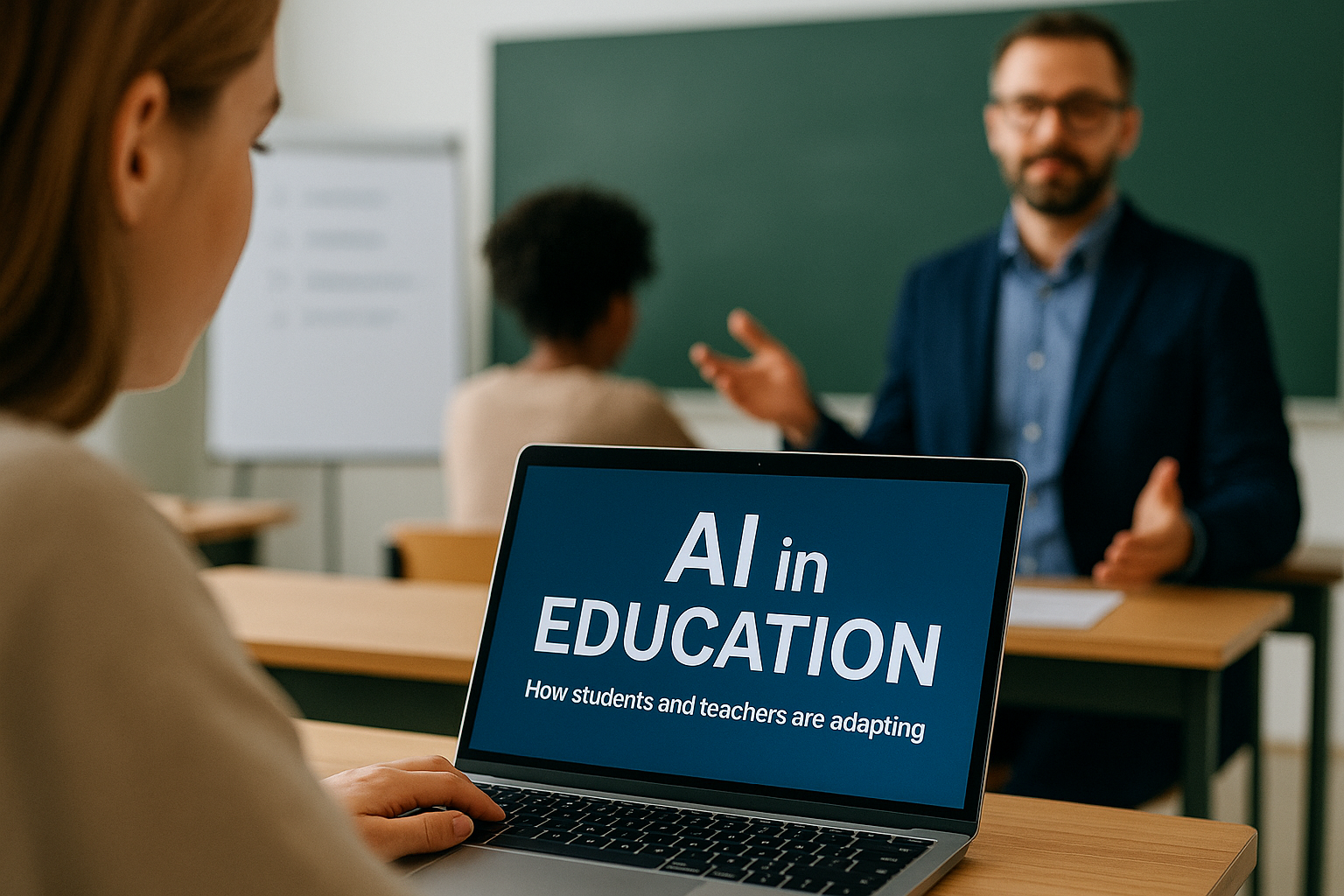The integration of Artificial Intelligence (AI) in education is not just a futuristic concept — it’s already happening. From AI tutors to smart grading tools and adaptive learning platforms, technology is rapidly transforming how students learn and how teachers teach. But how exactly are these changes playing out in real life? Let’s explore how both students and educators are adapting to this new reality.
What Is AI in Education?
AI in education refers to the use of machine learning algorithms and intelligent systems to support, enhance, or automate learning and teaching processes. These tools can provide personalized feedback, automate administrative tasks, and even detect learning gaps.
Some examples include:
- Intelligent tutoring systems
- AI-based learning platforms like Duolingo or Khan Academy
- Automated essay grading tools
- Chatbots that answer student queries
- Predictive analytics for student performance
How Students Are Adapting to AI in the Classroom
1. Personalized Learning Experiences
One of the greatest benefits for students is personalization. AI-powered platforms analyze a student’s progress and adapt the material accordingly. This means struggling students get extra help, while advanced learners can move ahead at their own pace.
2. 24/7 Access to Help
Students no longer have to wait until class hours to get help. AI chatbots and virtual tutors provide instant assistance — whether it’s explaining a math problem at midnight or helping with language practice before a test.
3. Improved Study Habits
AI tools like Anki or Quizlet use spaced repetition and smart scheduling to help students memorize more effectively. These apps track what students know and adjust the review timing for maximum retention.
4. Greater Engagement Through Interactivity
AI-infused learning apps often use gamification, voice interaction, and real-time feedback, making learning more engaging — especially for younger students who are used to interactive digital environments.
How Teachers Are Adapting to AI Tools
1. Reducing Administrative Burden
Teachers often spend hours grading papers and managing schedules. AI tools now automate much of that — grading quizzes, organizing assignments, and even identifying students who might need extra help based on data.
2. Improved Curriculum Design
By analyzing student performance data, teachers can adjust lesson plans to focus on topics where students struggle most. Some AI systems even offer suggestions on how to improve teaching strategies.
3. More Time for Student Interaction
Since AI handles repetitive tasks, teachers can focus more on what matters most: engaging with students, mentoring, and providing emotional support — the human side of teaching that machines can’t replace.
4. Training and Upskilling
Educators are increasingly attending workshops and courses to understand how to incorporate AI tools into their teaching. This is a learning curve, but one that many are embracing as part of professional development.
Benefits of AI in Education
- Efficiency: Automates repetitive tasks
- Customization: Tailors learning to individual needs
- Engagement: Makes learning more interactive
- Insight: Provides data that helps inform teaching
Challenges of AI in Education
1. Access and Equity
Not all students or schools have equal access to technology. There’s a risk of widening the educational gap if AI tools are only available to well-funded institutions.
2. Data Privacy Concerns
Using AI means collecting a lot of data on student performance and behavior. Ensuring that this data is secure and used ethically is a major concern.
3. Dependence on Technology
There’s a risk of over-reliance. Students and teachers must still develop critical thinking, communication, and social skills that machines cannot teach.
4. Resistance to Change
Some educators are hesitant to adopt AI tools, either due to lack of training, fear of being replaced, or skepticism about the technology’s effectiveness.
Future of AI in the Classroom
AI is not here to replace teachers — it’s here to empower them. As the technology continues to improve, we’ll likely see even more sophisticated tools such as:
- AI that adapts in real-time during class discussions
- Virtual reality classrooms guided by AI
- Predictive analytics to prevent dropouts or failure
- Cross-cultural learning platforms powered by real-time translation
Final Thoughts: A Partnership, Not a Replacement
AI in education is opening new doors, not closing them. Students are gaining more control over how they learn, while teachers are becoming more empowered through smarter tools. The key is balance — using AI to complement human instruction, not replace it. As this partnership evolves, education is becoming more inclusive, efficient, and personalized than ever before.
